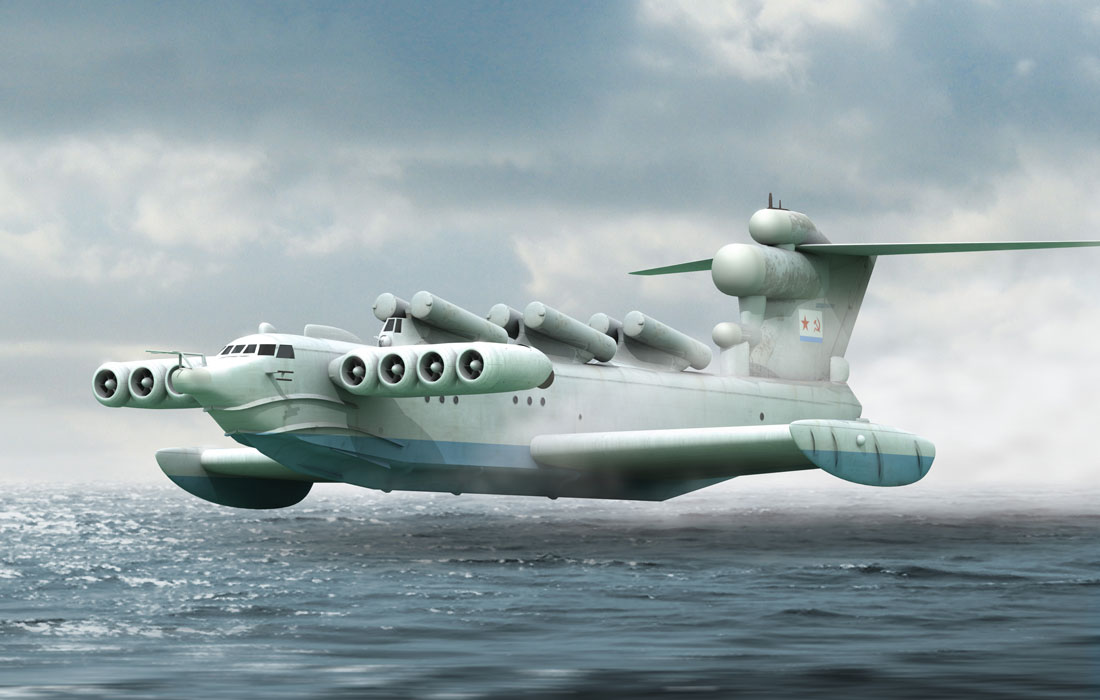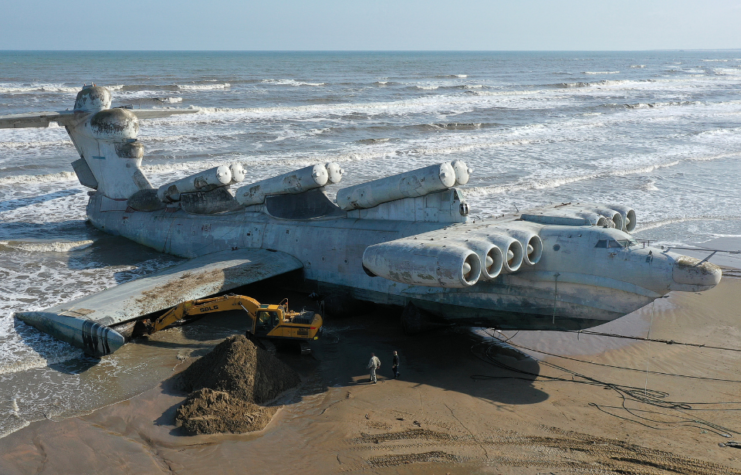


The groundbreaking performance of the Liberty Lifter hinges on the utilization of “ground effect” or “wing-in-ground effect,” a unique aerodynamic phenomenon that was a subject of great intrigue during the Cold War era.
During the late 1960s, American reconnaissance satellites monitoring the Soviet Union’s activities observed an enigmatic, enormous aircraft maneuvering over the Caspian Sea. Dubbed the “Caspian Sea Monster” by intelligence analysts, this aircraft, weighing more than 500 tonnes, baffled experts due to its stout wings seemingly incompatible with its size and weight for flight.
As it turns out, the mystery aircraft was an ekranoplan, part of a series of ground effect vehicles developed by the Soviet military. These craft capitalized on ground effect to evade radar detection and carry significant missile payloads while flying at extremely low altitudes. This effect is manifested when an aircraft flies very close to the ground or water, creating a cushion of trapped air beneath it. Consequently, drag is reduced, and lift is increased, allowing for aircraft with smaller wings, greater cargo capacity, or a combination of both.
The Liberty Lifter initiative aspires to not only mitigate some of the limitations of ground effect craft but also to elevate the technology’s capabilities. The envisioned aircraft should be capable of transporting heavy loads across extensive distances, taking off and landing on water to eliminate the need for conventional runways, employing cost-effective boat-building techniques for construction, and operating maintenance-free for extended periods.
Furthermore, the Liberty Lifter should be equipped to withstand challenging maritime conditions, including taking off and landing in Sea State 4 (with wave heights of up to 8.4 feet or 2.5 meters) and operating in Sea State 5 (with wave heights of up to 13.1 feet or 4 meters). Additionally, it should be proficient in transitioning from ground effect to an altitude of 10,000 feet (3,000 meters) above sea level.
In the project’s Phase 1, Aurora Flight Sciences, in collaboration with Gibbs & Cox and ReconCraft, is developing a design resembling a conventional flying boat with a high wing and eight turboprop engines. Meanwhile, General Atomics and Maritime Applied Physics Corporation are pioneering a more unconventional twin-hull, mid-wing design that offers enhanced water stability and seakeeping abilities, powered by 12 turboshaft engines.
Phase 1 is anticipated to span 18 months, involving six months of conceptual design and nine months of design refinement. Following this, a preliminary design review and test/demonstration planning reviews are planned for three months later. Phase 2, scheduled for 2024, will see the successful design move forward for full-scale development, manufacturing, and demonstration as the Liberty Lifter X-Plane.
DARPA’s Liberty Lifter program manager, Christopher Kent, expressed enthusiasm for the project’s initiation, highlighting the diverse design approaches of the two teams and their potential to explore a wide range of design possibilities during Phase 1.
To catch a glimpse of DARPA’s ambitious endeavor, watch the video: “DARPA Begins Designing Massive Carrier Seaplane – Liberty Lifter X-Plane.”








